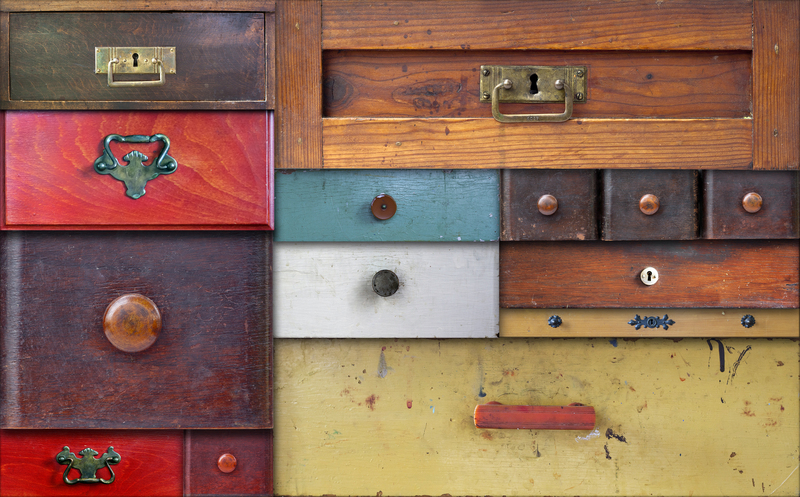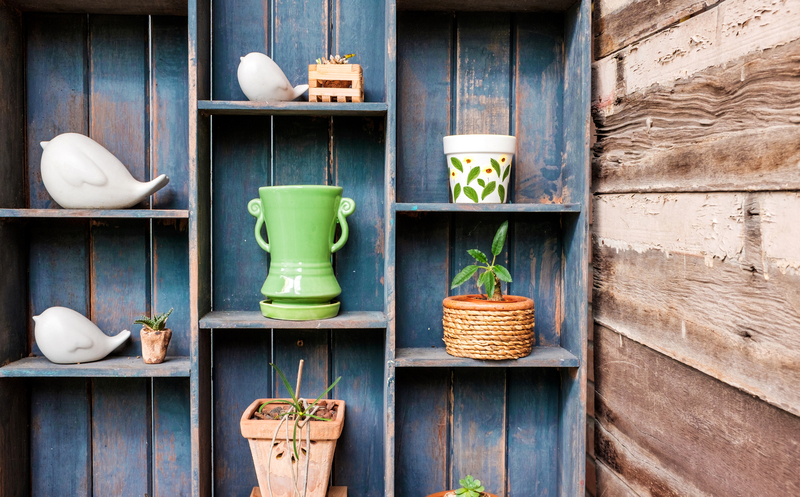From Waste to Wow: Unexpected Ways to Repurpose Old Materials
Turning trash into treasure is more than just a trend--it's a movement that's changing the way we think about consumption, creativity, and the environment. Repurposing old materials not only helps reduce landfill waste but also fosters artistic and practical innovation. In today's eco-conscious world, upcycling and creative reuse are gaining momentum across homes, businesses, and communities. In this article, we'll dive deep into unexpected ways to repurpose old materials, giving you actionable ideas and inspiration to transform your waste into wow-worthy creations.
Why Repurpose Old Materials?
Before we jump into ideas, it's important to understand why repurposing is so crucial. The linear "take-make-dispose" economy has put enormous strain on the planet. By finding innovative uses for discarded materials, we can:
- Reduce landfill waste and cut down on pollution.
- Conserve natural resources by making the most of what already exists.
- Save money--creative reuse is often cheaper than buying new.
- Enhance creativity and craftsmanship in everyday life.
- Support the circular economy and sustainable living.
*Whether you call it upcycling, repurposing, or creative reuse, giving new life to old items is both eco-friendly and rewarding.*

Unexpected Ways to Repurpose Materials in Your Home
Home is where the heart is--and often, where the clutter is too. Fortunately, the solution to much of our "junk" lies in reimagining its purpose. Here are some astonishing, unexpected ways to recycle and upcycle old materials around the house:
1. Transform Wooden Pallets Into Furniture
Wooden pallets are often discarded after shipping. However, with a little creativity, they can be repurposed in surprising ways:
- Outdoor sofas or garden benches--stack and secure pallets, add cushion for comfort.
- Coffee tables or bookshelves--sand and add casters for a mobile statement piece.
- Garden planters or vertical gardens--mount pallets on walls and fill with soil and plants for a green accent.
*Not only do you save money, but you also create unique, rustic decor that can't be found in stores!*
2. Mason Jars: The Swiss Army Knife of Repurposing
Never throw away glass mason jars. Their uses are almost endless:
- Lanterns and candle holders
- Toothbrush or makeup brush organizers
- Spice or pantry storage (add a chalk label for customization!)
- DIY soap dispensers
- Mini indoor terrariums
Mason jars not only reduce plastic but also add a charming, nostalgic touch to your home aesthetic.
3. Repurposing Old Clothes Beyond Rags
Got a pile of worn-out clothes? Don't toss them! Here's how you can revitalize your wardrobe waste:
- T-shirt quilts--memorialize old sports shirts and concert tees as quilts or pillow covers.
- Upcycled fabric baskets--weave old fabric into stylish yet practical baskets.
- Reusable produce bags--replace plastic bags with homemade drawstring bags from old shirts.
- Rag rugs or floor mats--braid strips of fabric for a colorful, durable rug.
Tip: Even small scraps can be used for patchwork projects or as filling for pet beds.
4. Repurpose Kitchen Cast-Offs
Even your kitchen cast-offs can be gold mines for sustainable living:
- Wine cork trivets--glue together old corks for a natural heat pad.
- Bottle caps art--compose mosaics or embellishments for picture frames.
- Broken dishes--use pieces in mosaic garden stones or decorative panels.
- Egg cartons--perfect for seed starters or organizing small craft supplies.
*With a little imagination, yesterday's trash becomes today's treasure!*
5. Turn Old Electronics Into Ingenious Items
Electronic waste, or e-waste, is a huge environmental problem. Instead of discarding, try these clever solutions:
- Hard drive clocks--convert old hard drives into unique, geek-chic wall clocks.
- Circuit board jewelry--make bold earrings or pendants from colorful circuit boards.
- CD case picture frames--reuse cases as clear frames or shadow boxes for lightweight art.
- Outdated keyboards--dismantle for keychains, magnets, or decorative letters.
*Repurposing electronic materials not only saves space in landfills but also shows off your tech-savvy side!*
Creative Reuse in the Garden: Sustainable & Stylish Ideas
Gardening is the perfect way to combine repurposed materials with sustainability. Here are some inventive, eco-friendly ideas to spruce up your yard with salvaged goods:
1. Plastic Bottles as Planters and Watering Tools
- Vertical gardens--cut and stack bottles for space-saving wall gardens.
- Self-watering planters--use an inverted bottle to create a slow-drip system for thirsty plants.
- DIY greenhouse covers--use clear bottles to shield seedlings from frost.
*Plastic bottles take centuries to decompose, but with a little ingenuity, they can foster new life in your garden!*
2. Tire Planters and Playgrounds
Old tires are problematic for the environment, but they can become vibrant outdoor features:
- Painted tire planters--stack and paint for colorful flower beds.
- Garden seats--cushion and encase with fabric for durable outdoor stools.
- Children's climbing structures--build a safe, fun mini-playground.
3. Broken Tools into Garden Art
Even rusted shovels, rakes, or wheelbarrows can be given a second chance:
- Tool handles as trellises--tie together for beans or climbing flowers.
- Wheelbarrow flower beds--rusty or leaky wheelbarrow? Turn it into a portable flower display.
- Wall art--mount old tools on a shed or fence as rustic decor.
Repurposing for Art and Decor: From Waste to Wow
For the creatively inclined, repurposing old materials is the ultimate form of eco-art. Here are some ingenious ways to turn household waste into gallery-worthy masterpieces:
Assemblage Art: Collages and Sculptures
- Magazine pages or book pages -- layer and glue for large murals or framed collages.
- Found object sculptures -- build whimsical characters or animals from nuts, bolts, and random hardware.
- Furniture mashups -- combine mismatched chair legs, tabletops, and drawers for imaginative new pieces.
Bottle Cap and Can Tab Creations
- Can tab curtains--link together with wire or string for metallic room dividers or window treatments.
- Bottle cap mosaics--glue caps to wooden boards for bold, colorful wall art.
- Decorative chains--create jewelry, belts, or pet collars from can tabs.
Frame Old Windows and Doors
- Antique window frames--convert to photo displays, mirrors, or message boards.
- Doors as headboards--old doors add character when set behind a bed.
- Shelves from shutters--mount window shutters for a rustic floating shelf.
Repurposed Materials in Community Projects and Public Spaces
Beyond the home and garden, entire communities are embracing the magic of upcycling. Creative reuse of old materials can spark social change while beautifying neighborhoods:
Public Art and Murals
- Reclaimed metal sculptures--large installations that celebrate local history and industry.
- Mosaic murals with found tiles, mirrors, and ceramics--community-driven projects transform blank walls into vibrant landmarks.
- Plastic bottle installations--colorful canopies or light tunnels in parks and playgrounds.
Functional Community Initiatives
- Park benches from plastic waste--organizations recycle soda bottles into durable outdoor seating.
- Bike racks from scrap metal--both practical and a showcase for local artisanship.
- Shared tool libraries and repair cafes--encourage extended product life and reduce consumption by facilitating sharing and repair.
Unexpected Repurposing Tips for Small Businesses
Sustainable practices are not only for environmentalists--businesses are turning to upcycled solutions for branding, decor, and operations:
- Shipping pallets as display shelves in retail shops.
- Reclaimed wood for signage--unique, weathered boards for eye-catching company logos.
- Fabric scraps for product packaging--layering colors and keeping waste out of landfills.
- Repurposed electronic displays for digital signage or menu boards.
- Old furniture upcycling--refreshing old chairs or desks for customer lounge areas, saving costs and adding character.
Getting Started: Best Practices for Safe and Smart Repurposing
While the world of upcycling and creative reuse is wide open, there are a few tips to follow for success and safety:
- Clean all materials thoroughly before reuse, especially food containers or fabric items.
- Remove any sharp edges, rust, or hazardous coatings before using materials for children's projects or garden beds.
- When in doubt, research the origin of materials--avoid items treated with toxic chemicals.
- Use proper tools and safety equipment for cutting, gluing, or constructing new items.
- Start small; master basic techniques (like sanding, drilling, or sewing) before attempting large projects.
- Get inspired--search online communities, local workshops, or library books for new ideas regularly.

Conclusion: The New Value of Old Materials
From worn-out jeans to kitchen jars, almost every "waste" item has hidden potential. Turning trash into functional, beautiful, or meaningful creations not only saves resources but also empowers communities, inspires creativity, and fosters a deeper connection with what we own.
The next time you're tempted to throw something away, pause and reimagine: Could this become the base for a new project, a gift, or a solution for your home? Start small, experiment fearlessly, and join the growing movement that proves sustainability and style can go hand in hand.
*Remember, every piece you repurpose is a step toward a greener, more imaginative world. Give your waste a second chance--and transform your space and mindset from waste to wow!*
Frequently Asked Questions (FAQs) About Repurposing Old Materials
- What is the difference between recycling and upcycling?
Recycling typically involves breaking down materials to manufacture new items, often requiring energy-intensive processing. Upcycling or repurposing finds direct reuse for items, maintaining or increasing their value with minimal processing. - Are there any materials that shouldn't be repurposed?
Avoid repurposing items with hazardous chemicals (lead paint, asbestos), or consumables like old medication packaging. Always research before use. - How can I find local resources or communities for repurposing?
Check out online marketplaces (like Freecycle or Facebook Marketplace), community swap events, repair cafes, or maker spaces in your area.
Transform your waste and be amazed at the endless possibilities--your next upcycling adventure is only limited by your imagination!